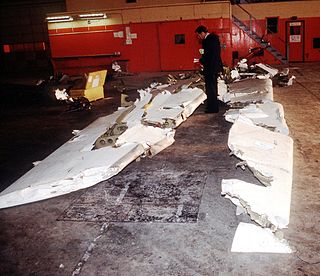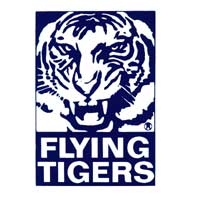Related Research Articles

Indian Airlines was a state-owned airline in India that later became a division of Air India Limited before ultimately ceasing operations. It was based in Delhi and focused primarily on domestic routes, along with several international services to neighbouring countries in Asia and limited flights to the Middle East and South-East Asia. It was a division of Air India Limited after the merger of eight pre-Independence domestic airlines.

Arrow Air Flight 1285R was an international charter flight carrying U.S. Army personnel from Cairo, Egypt, to their home base in Fort Campbell, Kentucky, via Cologne, West Germany, and Gander, Newfoundland. On the morning of Thursday, 12 December 1985, shortly after takeoff from Gander en route to Fort Campbell, the McDonnell Douglas DC-8 serving the flight stalled, crashed, and burned about half a mile from the runway, killing all 248 passengers and 8 crew members on board. As of 2023, it is the deadliest aviation accident to occur on Canadian soil. At the time of the crash, it was the deadliest aviation accident involving a DC-8; as of 2023, it is the second-deadliest, behind the crash of Nigeria Airways Flight 2120 nearly six years later.
This is a list of aviation-related events from 1976.
This is a list of aviation-related events from 1993.

Gander International Airport is located in Gander, Newfoundland and Labrador, Canada, and is operated by the Gander International Airport Authority. Canadian Forces Base Gander shares the airfield but is a separate entity from the airport. The airport is sometimes referred to as the "Crossroads of the World", and is classified as an international airport by Transport Canada.

Flying Tiger Line, also known as Flying Tigers, was the first scheduled cargo airline in the United States and a major military charter operator during the Cold War era for both cargo and personnel. The airline was bought by Federal Express in 1988.

Pilot error generally refers to an accident in which an action or decision made by the pilot was the cause or a contributing factor that led to the accident, but also includes the pilot's failure to make a correct decision or take proper action. Errors are intentional actions that fail to achieve their intended outcomes. The Chicago Convention defines the term "accident" as "an occurrence associated with the operation of an aircraft [...] in which [...] a person is fatally or seriously injured [...] except when the injuries are [...] inflicted by other persons." Hence the definition of "pilot error" does not include deliberate crashing.

American Overseas Airlines (AOA) was an airline that operated between the United States and Europe between 1945 and 1950. It was headquartered in Midtown Manhattan, New York City.
In aeronautics, loss of control (LOC) is the unintended departure of an aircraft from controlled flight and is a significant factor in several aviation accidents worldwide. In 2015 it was the leading cause of general aviation accidents. Loss of control may be the result of mechanical failure, external disturbances, aircraft upset conditions, or inappropriate crew actions or responses.

The 1961 President Airlines Douglas DC-6 crash occurred on the night of September 10, 1961, when a President Airlines Douglas DC-6B named Theodore Roosevelt outbound from Shannon, Ireland crashed into the nearby River Shannon shortly after takeoff, killing all 83 people on board. To date, the crash remains the deadliest one in Irish territory.
References
- 1 2 3 4 "Accident report". ASN. Retrieved 16 February 2014.